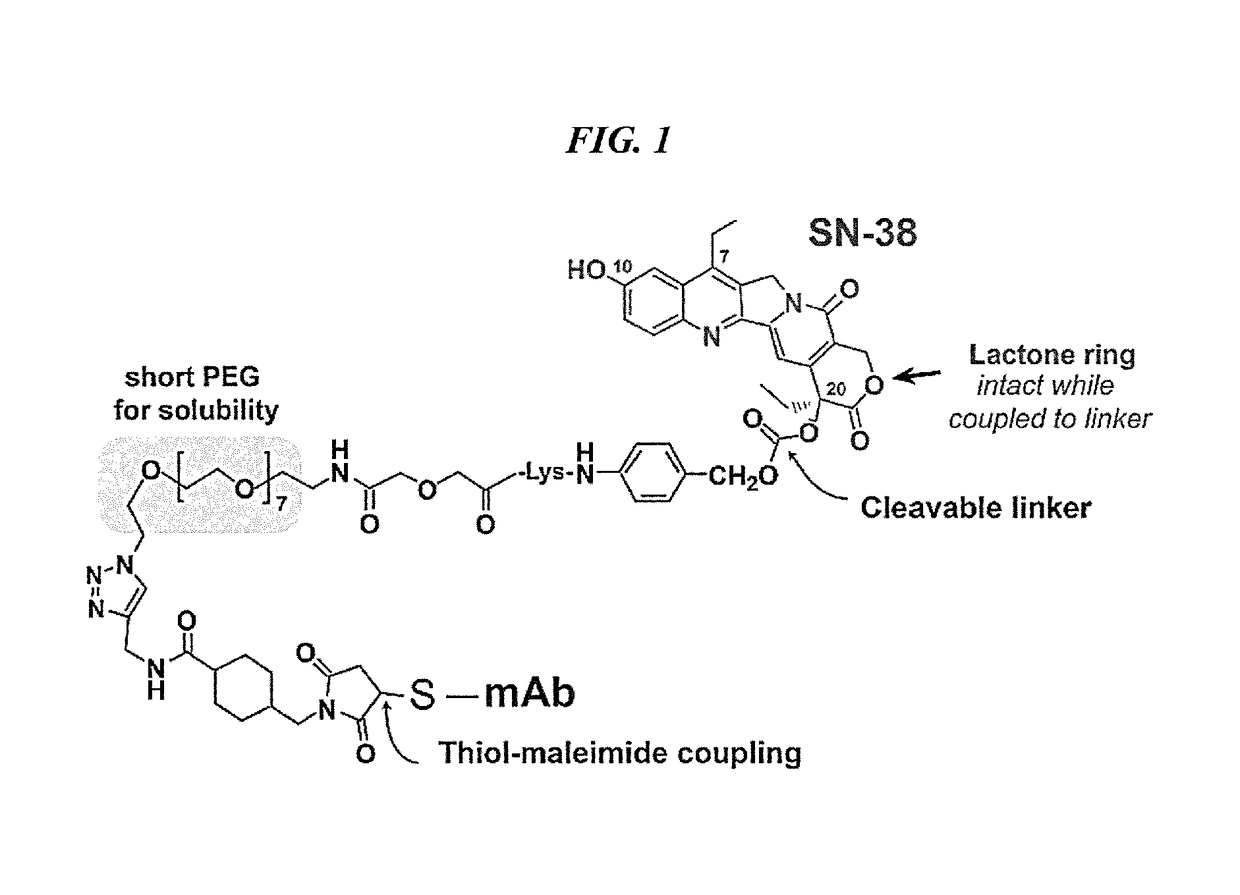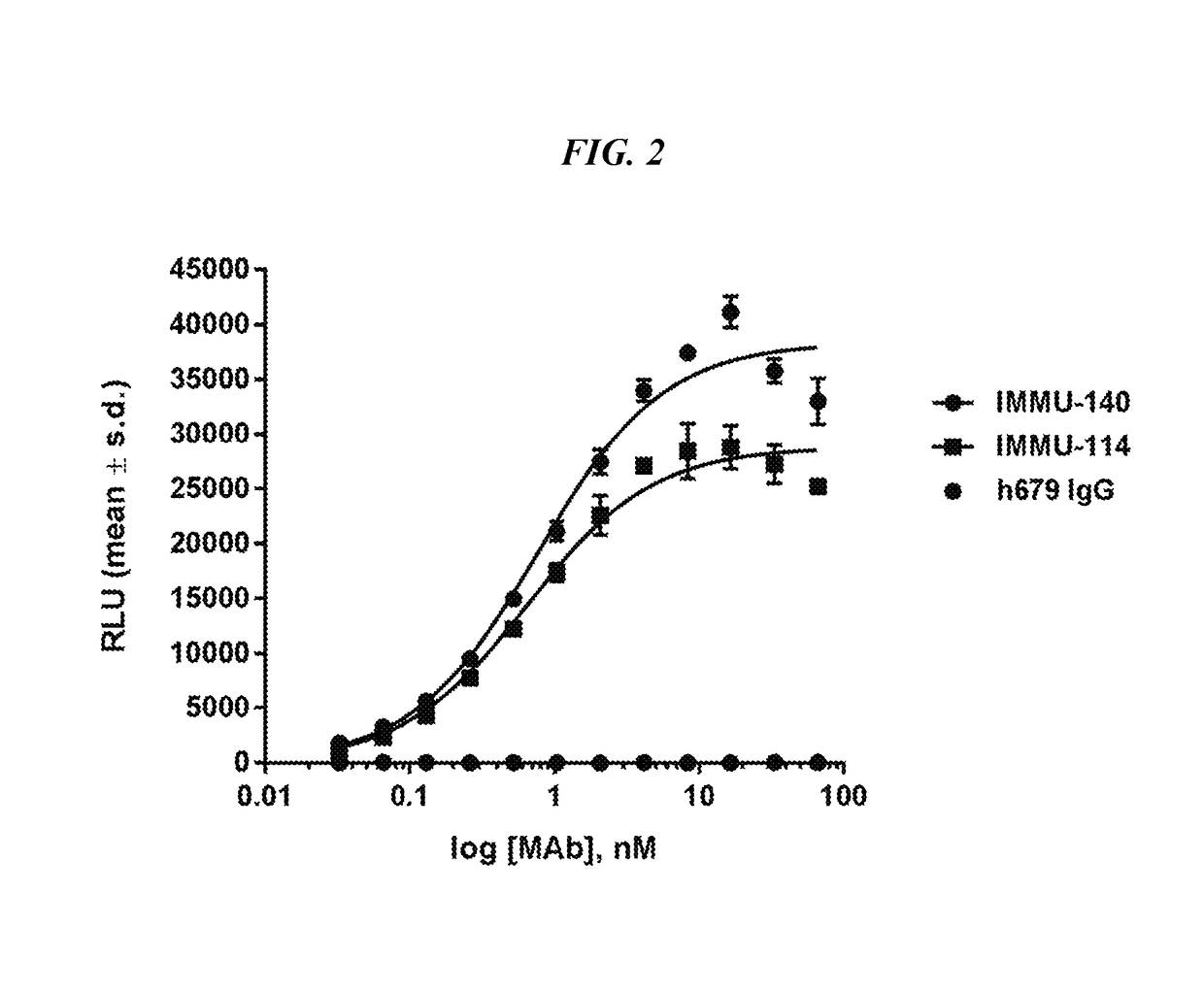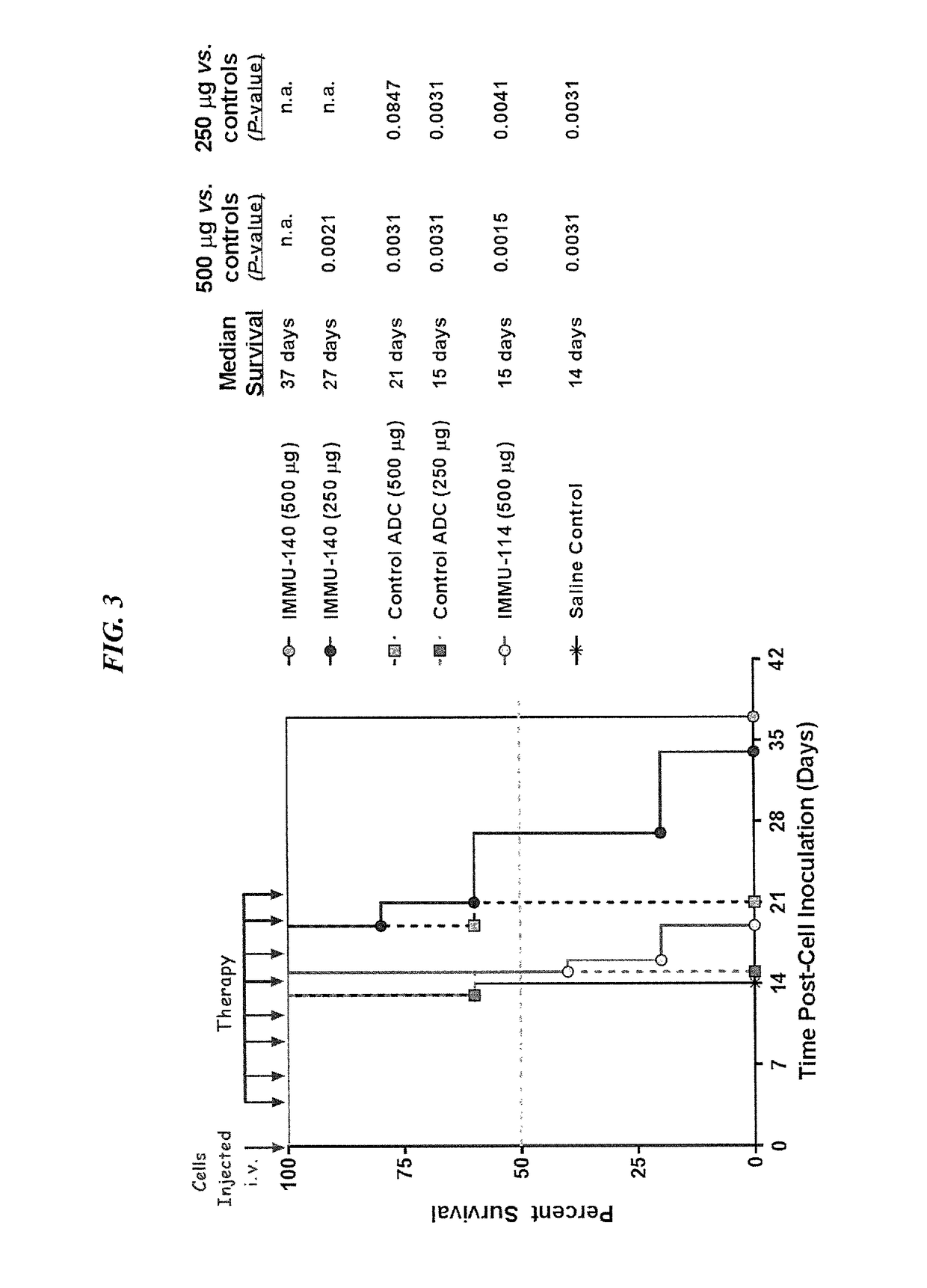Efficacy of anti-HLA-DR antiboddy drug conjugate IMMU-140 (hL243-CL2A-SN-38) in HLA-DR positive cancers
a technology of anti-hladr and conjugate immu-140, which is applied in the field of efficacy of anti-hladr anti-boddy drug conjugate im, can solve the problems of reducing immunogenicity, and achieve the effects of overcoming tumors, improving targeting, and reducing immunogenicity
- Summary
- Abstract
- Description
- Claims
- Application Information
AI Technical Summary
Benefits of technology
Problems solved by technology
Method used
Image
Examples
example 3
on of CL2A-SN-38
[0255]To the mixture of commercially available Fmoc-Lys(MMT)-OH (0.943 g), p-aminobenzyl alcohol (0.190 g) in methylene chloride (10 mL) was added EEDQ (0.382 g) at room temperature and stirred for 4 h. Extractive work up followed by flash chromatograph yielded 1.051 g of material as white foam. All HPLC analyses were performed by Method B as stated in ‘General’ in section 0148. HPLC ret. time: 3.53 min., Electrospray mass spectrum showed peaks at m / e 745.8 (M+H) and m / e 780.3 (M+CI), consistent with structure. This intermediate (0.93 g) was dissolved in diethylamine (10 mL) and stirred for 2 h. After solvent removal, the residue was washed in hexane to obtain 0.6 g of the intermediate ((2) in Scheme-3) as colorless precipitate (91.6% pure by HPLC). HPLC ret. time: 2.06 min. Electrospray mass spectrum showed peaks at m / e 523.8 (M+H), m / e 546.2 (M+Na) and m / e 522.5 (M−H).
[0256]This crude intermediate (0.565 g) was coupled with commercially available O-(2-azidoethyl)-O...
example 4
on of Bifunctional SN-38 Products to Mildly Reduced Antibodies
[0259]Each antibody was reduced with dithiothreitol (DTT), used in a 50-to-70-fold molar excess, in 40 mM PBS, pH 7.4, containing 5.4 mM EDTA, at 37° C. (bath) for 45 min. The reduced product was purified by size-exclusion chromatography and / or diafiltration, and was buffer-exchanged into a suitable buffer at pH 6.5. The thiol content was determined by Ellman's assay, and was in the 6.5-to-8.5 SH / IgG range. Alternatively, the antibodies were reduced with Tris (2-carboxyethyl) phosphine (TCEP) in phosphate buffer at pH in the range of 5-7, followed by in situ conjugation. The reduced MAb was reacted with CL2A-SN-38 using DMSO at 7-15% v / v as co-solvent, and incubating for 20 min at ambient temperature. The conjugate was purified by centrifuged SEC, passage through a hydrophobic column, and finally by ultrafiltration-diafiltration. The product was assayed for SN-38 by absorbance at 366 nm and correlating with standard value...
example 5
243-SN-38 to Treat Therapy-Refractive Metastatic Colonic Cancer (mCRC)
[0261]The patient is a 67-year-old man who presents with metastatic colon cancer. Following transverse colectomy shortly after diagnosis, the patient then receives 4 cycles of FOLFOX chemotherapy in a neoadjuvant setting prior to partial hepatectomy for removal of metastatic lesions in the left lobe of the liver. This is followed by an adjuvant FOLFOX regimen for a total of 10 cycles of FOLFOX.
[0262]CT shows metastases to liver. His target lesion is a 3.0-cm tumor in the left lobe of the liver. Non-target lesions included several hypo-attenuated masses in the liver. Baseline CEA is 685 ng / mL.
[0263]After the patient signs the informed consent, hL243-SN-38 (10 mg / kg) is given every other week for 4 months. The patient experiences nausea (Grade 2) and fatigue (Grade 2) following the first treatment and continues the treatment without major adverse events. The first response assessment done (after 8 doses) shows shrin...
PUM
| Property | Measurement | Unit |
|---|---|---|
| volume | aaaaa | aaaaa |
| volume | aaaaa | aaaaa |
| volume | aaaaa | aaaaa |
Abstract
Description
Claims
Application Information
 Login to View More
Login to View More - R&D
- Intellectual Property
- Life Sciences
- Materials
- Tech Scout
- Unparalleled Data Quality
- Higher Quality Content
- 60% Fewer Hallucinations
Browse by: Latest US Patents, China's latest patents, Technical Efficacy Thesaurus, Application Domain, Technology Topic, Popular Technical Reports.
© 2025 PatSnap. All rights reserved.Legal|Privacy policy|Modern Slavery Act Transparency Statement|Sitemap|About US| Contact US: help@patsnap.com



